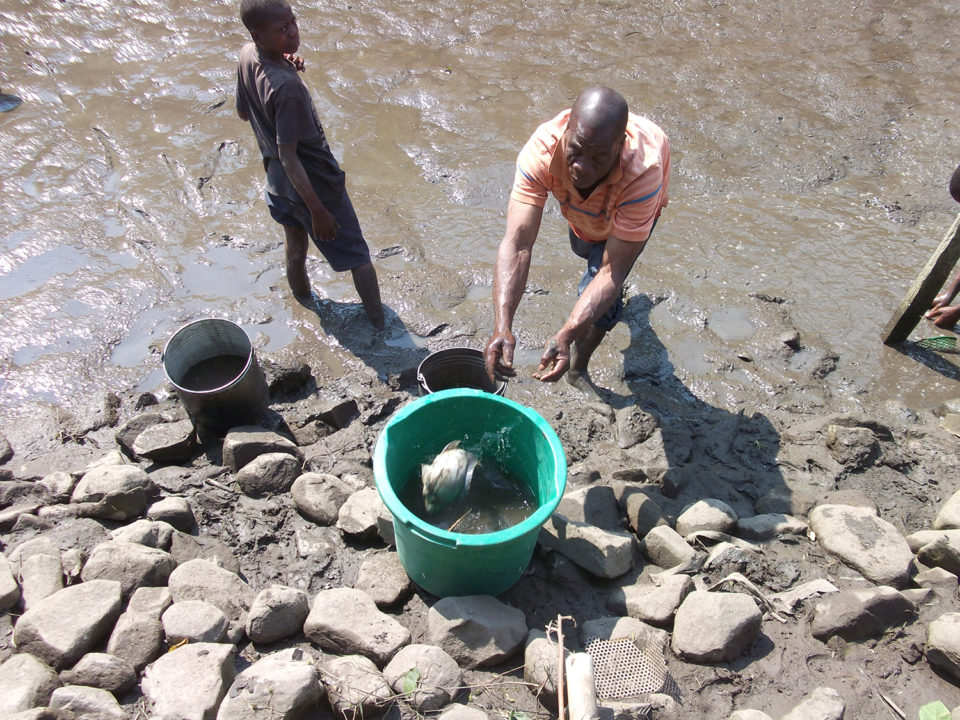Immink: Determine the thresholds for a sensible return on investment in aquaculture in Africa

Editor’s note: Anton Immink, aquaculture director for the Sustainable Fisheries Partnership, provides his personal reflections based on years of experience across the African continent and his strong passion for effective aquaculture investment and development. Immink is a member of the Advocate’s Editorial Advisory Board.
Is Africa a ‘new Asia’ for aquaculture? The short answer is “no.”
A lower population density and dispersed infrastructure do not provide the basics required to mirror the scale of Asian aquaculture, making the delivery of the services aquaculture needs prohibitively expensive. Obviously, it isn’t that simple and there are countries where aquaculture is booming – so I would also caution against generalizations about the whole continent [true for Asia too], but those successes tend to be contingent upon a higher population density and concentrated infrastructure.
We need to keep in mind that aquaculture is more like horticulture than agriculture, and not understanding that is a big reason why previous projects failed – they saw lots of good, clean land and water available where you could grow wheat or rice, but didn’t factor in the costs (and lack of availability) of labor and proximity to markets for both inputs and sales. There has also been a lack of understanding of the social and economic value of fish: Farmed fish are often seen as lower quality, and compete hard on price with an efficient local poultry industry.
Feed and seed are limiting factors – no doubt. But the idea of “local/farm made feeds” perpetuates the high costs and inefficiencies. Project-supported small-scale hatchery and fingerling distribution networks usually fail, the donor money dries up, and the hard realities of price and logistics hit home. Aiming to improve strains when farmers are just not producing consistently even to a basic level does not tackle the real costs and inefficiencies that come from that low population density.
Investing in the wrong place will just perpetuate the myth and increase the wasted effort already piling up.
The waste of money is upsetting, but what really frustrates me is the perpetuation of the myth that just a little more investment in some technical solutions will solve the problem. The money would be better spent on education, roads and sanitation – come back to aquaculture when the real limiting factors have crossed a threshold.
And there is my call to the researchers – spend time to determine what the thresholds really are that would give us a situation where we could expect a return on investment in aquaculture (it can’t just be my experienced assumptions). By that I mean a return to the livelihoods of farmers, to GDP. Until then, let’s see a bit of honesty from everyone about the chances of success.
There are countries where aquaculture is working, such as Egypt, Nigeria, Ghana — to the point where some strong sector management is needed to prevent some of the environmental and disease-related challenges seen in Asian aquaculture! Population (and infrastructure) density is high enough to provide efficient and cost-effective markets, input supplies and labor. Now is the time for that investment in efficiency improvements, better genetics, health management and more competition and innovation in the feed sector. With the right investment, effective governance and a little patience – and I’m coming full circle here – these countries could be the next Asia, yes!
But please don’t lump all of Africa, a continent of incredible diversity, into one. I say this not from some emotional tug, but because investment has to be in the right place to do wonders. Investing in the wrong place (and I would say that is still most of the continent), will just perpetuate the myth and increase the wasted effort already piling up.
Anton Immink joined Sustainable Fisheries Partnership as its first global aquaculture director in November 2012 and has built strong support for improved aquaculture planning and management, particularly in terms of managing cumulative environmental impacts and shared disease risks. Anton has 20 years’ experience in aquaculture management, spanning commercial, social and environmental projects across Asia and Africa.
Author
-

Anton Immink
Global Aquaculture Director
Sustainable Fisheries Partnership
Stirling, Scotland, UK
Tagged With
Related Posts

Responsibility
Opinion: Aquaculture’s way forward is to embrace zonal management
The idea that fish farms’ health and safety are interconnected is not new. Even the best-run farms are not protected from diseases or pollution from another farm close by, so further measures are necessary, argues Anton Immink of Sustainable Fisheries Partnership.

Health & Welfare
Sizing up TiLV and its potential impact on tilapia production
An international research effort has commenced to find a solution for Tilapia Lake Virus (TiLV), a contagion causing high rates of mortality in farmed and wild tilapia stocks in Israel, Colombia, Ecuador, Egypt and Thailand.

Responsibility
Aquaculture certification steers to zone management
Zone management is an emerging field of interest among industry stakeholders. Experts say it will aid in controlling diseases and in determining carrying capacities. We take a closer look at the management tool’s potential.

Responsibility
Growth away from the coast: Examining inland shrimp farming
Inland shrimp culture has numerous advantages – improved biosecurity, lower cost of land and reduced conflicts with other users of common resources like land and water – and will continue to expand into new areas.

